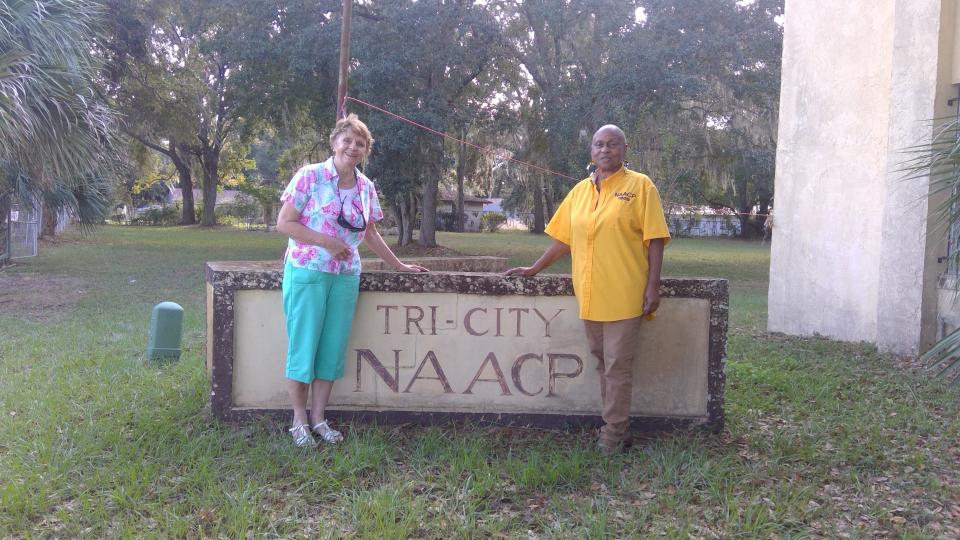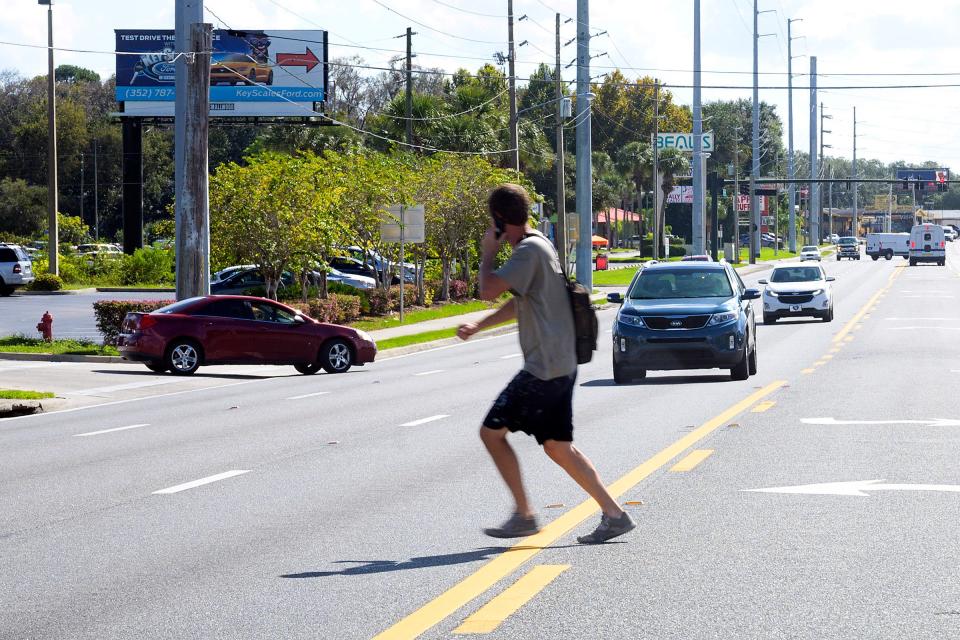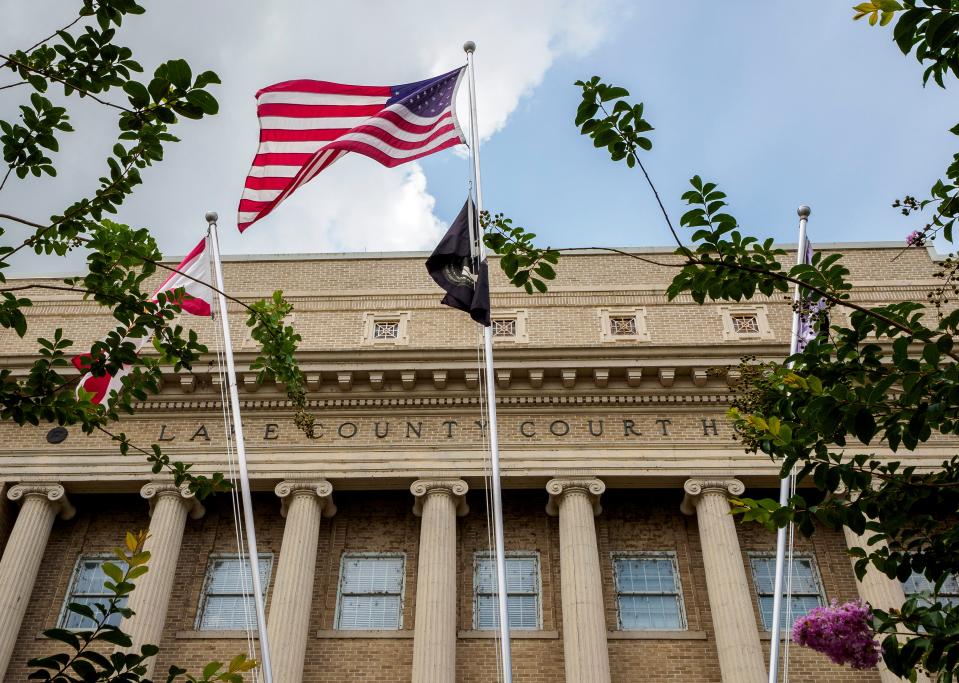Tri-City NAACP leads forums to discuss growth in Lake County
Editor's note: This story has been revised to clarify Beverly G. Ward's affliations.
MOUNT DORA — “We saw in the committee that growth was having a serious impact on Lake County,” said Beverly G. Ward in describing the impetus for the Environmental and Climate Justice Committee of the Tri-City NAACP in coordinating a three-part series called “Lake County’s Population Explosion.”
As a committee member and a field secretary for Earthcare, Southeastern Yearly Meeting of the Religious Society (Quakers) as well as co-clerk, Quaker Earthcare Witness, Ward facilitated the virtual sessions. She has a doctorate in applied anthropology from the University of South Florida, where she has taught and conducted research.
“Working within the (national) ECJ Committee’s mission, we want to gather input from the public about their concerns,” said Ward.
Tall order:Tall order: Mount Dora must decide how to regulate height of historic district buildings
Major growth in Lake:New neighbors for quaint Mount Dora: 1,068 residential units, 150,000 sf of commercial
More development:The Villages starts building thousands of homes on land it bought from Leesburg in 2018
“Environmental injustices, including climate change, have a disproportionate impact on communities of color and low-income communities in the United States and around the world,” says the national NAACP website.
“We surveyed local NAACP members to find out their environmental concerns,” reported the chair of the ECJ Committee, Jane Hepting, about a study conducted in early 2021. “Many respondents expressed concerns about water quality and rapid growth.”
The initial forum was an introductory discussion to talk about the concerns generated by the fact that Lake is one of the fastest growing counties in Florida.
Participants who engaged in the first session, held Nov. 4, 2021, indicated that they wanted to continue the discussions. The next two forums, held in February and August of 2022, featured panelists who serve as local elected officials and planning professionals.
“We brought the community to the elected officials,“ said Ward.

“In the second forum, government officials said we need to hear more from the public,” said Hepting.
Attended by more than 50 people, the third forum also included questions crafted by the organization’s Youth Council. When surveyed, priorities for the young people focused on jobs as well as walking and biking access.
“What are we doing for a greener Lake County?” was one of the council’s questions.
Forum organizers also worked with the Health Committee.
“Our (ECJ) committee is a cross-fertilization committee because without a good environment, other things aren’t going to work,” Ward said.
Tri-City NAACP aims to build relationships among officials and the community
“Health issues are an outcome of the environment: Cancer, respiratory illnesses are geographic,” explained Martha Taylor, the elected president of the Tri-City NAACP for nearly four years.
Among the many other issues that the committee is addressing are employment, transportation access to work, air and water quality, housing and disaster preparedness.
“We will take on issues that have an impact on the community that doesn’t always have a say,” said Taylor. “We know how government process works, but not everyone does.”
“It’s all about relationships,” said Taylor. “We’re building relationships with government and elected officials and with communities.”

Taylor added: “We need to make sure that they’re listening and that there is real discussion on both sides.”
“If you’re using federal money, you should look at disadvantage communities,” Taylor said.
She cited the Justice40 Initiative as an example of a federal directive that prioritizes disadvantaged communities. The U.S. Department of Transportation initiated the program “to address gaps in transportation infrastructure and public services by working toward the goal that many of our grants, programs, and initiatives allocate at least 40% of the benefits from federal investments to disadvantaged communities.”
Community input is important in expending federal transportation dollars
“The forums opened my eyes that I had some other resources out there that I can include in my public involvement,” said Michael Woods, executive director of the Lake-Sumter Metropolitan Planning Organization and a two-time panelist at the forums.
The MPO facilitates cooperative decision-making regarding regional transportation issues throughout the urbanized area of the two adjacent counties. Its planning process annually leverages millions of dollars in federal transportation funding. The MPO’s studies and plans are also useful to the two counties and the 19 cities within the area when submitting their own grant applications.
Woods uses an overlay map created by the Justice40 program when developing five-year as well as 20-year forecasted plans. Of the 1,482 disadvantaged census tracts in Florida, five are in Sumter County and 16 are in Lake County.

For example, the Leesburg tract is identified as “disadvantaged” because it has four categories that meet the criteria set by the federal government. Categories listed are affordable and sustainable housing, reduction and remediation of legacy pollution, health burdens, and training and workforce development.
The MPO anticipates an infusion of transportation monies from recent federal programs, such as the Infrastructure and Jobs Act and the Inflation Reduction Act. Items, such as expanding trails, which were brought up in the forums are already prioritized in the MPO plans.
About 87% of federal transportation monies are distributed based on population formulas while 13% of the money is discretionary. The 34 discretionary grant programs currently being rolled out are more time-sensitive five-year plans.
Public input and letters of support from area agencies are a key component of grant applications. Woods said that the promotion of the process to agencies such as the NAACP is important because “equity and planning is a big part of infrastructure.”
Pending the approval of the board of directors, the ECJ committee would like to host another on-line forum in February 2023 to assess priorities in creating a five-year plan. “Actionable to us in the sense that we’re not a service organization, but we can provide a platform to get to actionable items,” said Ward. “We can be a platform to lift up those voices that are not usually heard.”
“I am going to keep participating,” said Woods. “It (NAACP) is a good resource for me.”
This article originally appeared on Daily Commercial: Tri-City NAACP helps Lake County spot growth's benefits, challenges

